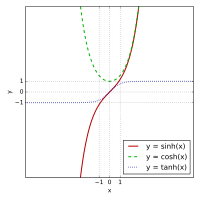Coshc function

The coshc function is a way to calculate a special number called the hyperbolic cosine. This might sound like a big word, but it's actually just a type of math that deals with certain shapes that look a bit like curvy hills.
To understand the coshc function, we first need to talk about the regular cosine function. This is a type of math that helps us figure out things like the length of the sides of a triangle. The coshc function is similar, but it's used for dealing with these curvy hills I mentioned earlier.
So let's say we have a curvy hill and we want to know something about it. We can use the coshc function to help us. We plug in some numbers that describe the hill, like its height and width, and the coshc function gives us back the hyperbolic cosine, which is a fancy way of saying a number that tells us something about the shape of the hill.
For example, if we have a really steep hill that's tall and thin, the coshc function might give us a big number, because the shape of the hill is very "curvy" and dramatic. But if the hill is more like a gentle slope, the coshc function might give us a smaller number, because the shape is more gradual.
So that's the coshc function – a way to calculate the hyperbolic cosine, which helps us understand the shape of curvy hills. It might sound complicated, but it's really just a tool that helps us solve math problems in a certain area of mathematics.
To understand the coshc function, we first need to talk about the regular cosine function. This is a type of math that helps us figure out things like the length of the sides of a triangle. The coshc function is similar, but it's used for dealing with these curvy hills I mentioned earlier.
So let's say we have a curvy hill and we want to know something about it. We can use the coshc function to help us. We plug in some numbers that describe the hill, like its height and width, and the coshc function gives us back the hyperbolic cosine, which is a fancy way of saying a number that tells us something about the shape of the hill.
For example, if we have a really steep hill that's tall and thin, the coshc function might give us a big number, because the shape of the hill is very "curvy" and dramatic. But if the hill is more like a gentle slope, the coshc function might give us a smaller number, because the shape is more gradual.
So that's the coshc function – a way to calculate the hyperbolic cosine, which helps us understand the shape of curvy hills. It might sound complicated, but it's really just a tool that helps us solve math problems in a certain area of mathematics.
Related topics others have asked about:
